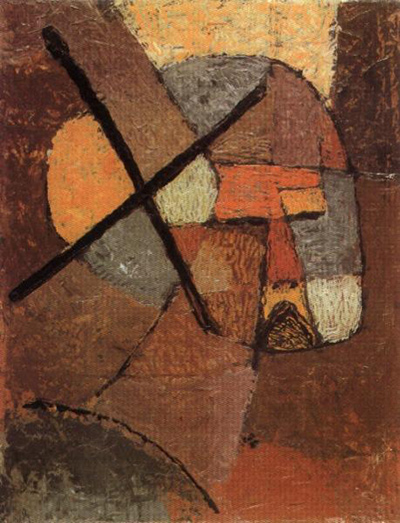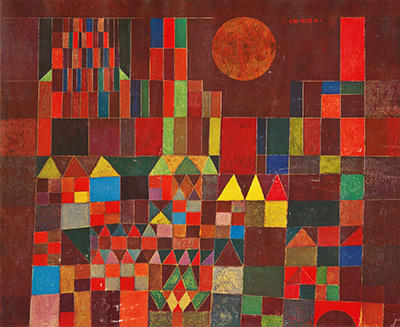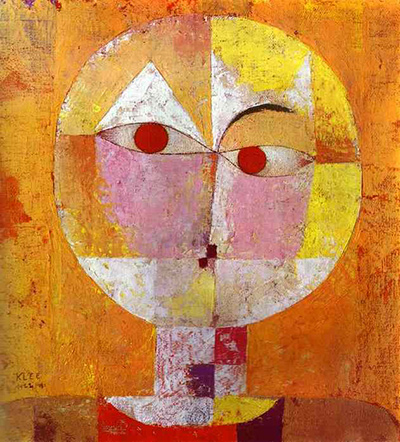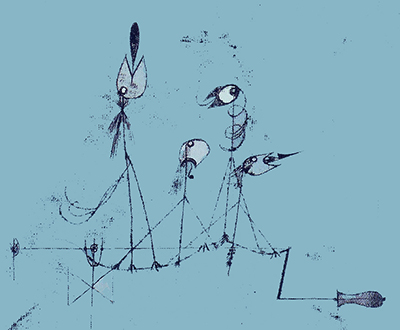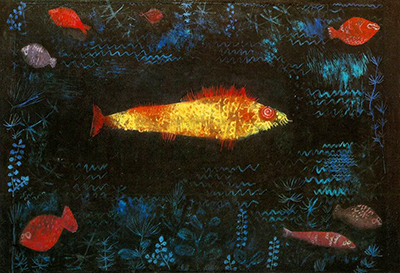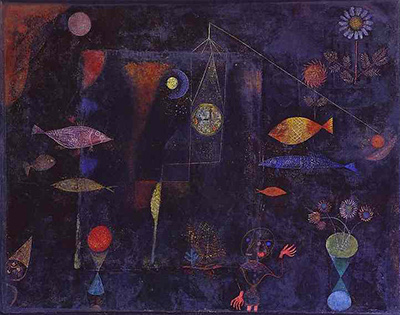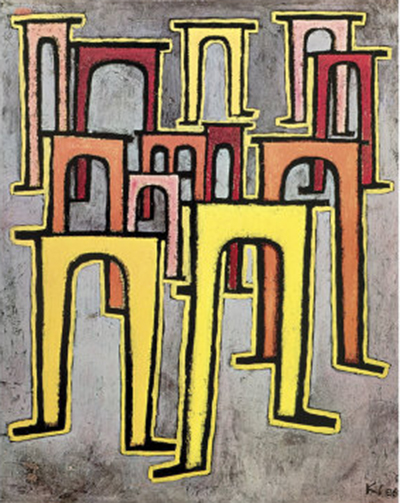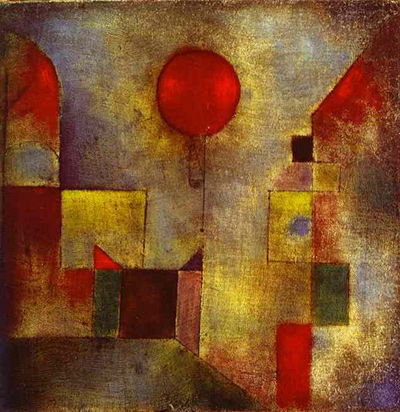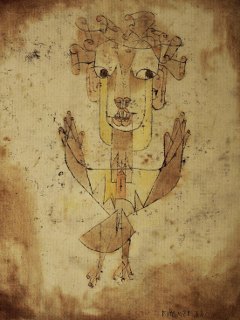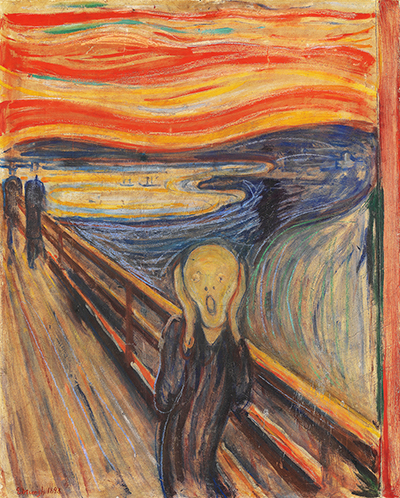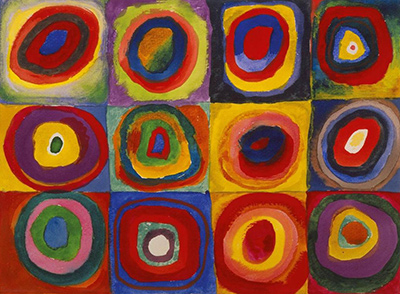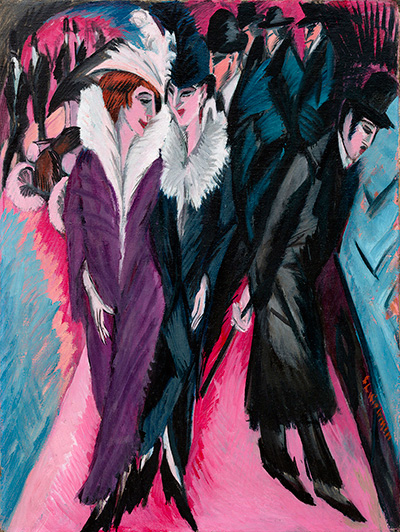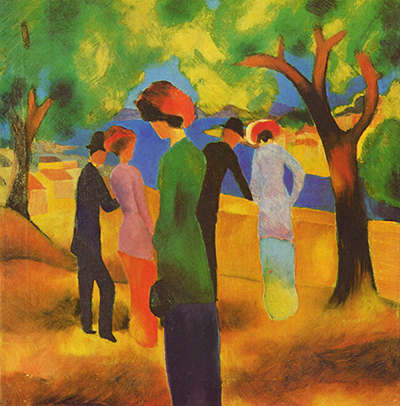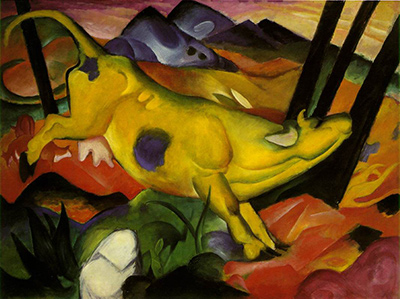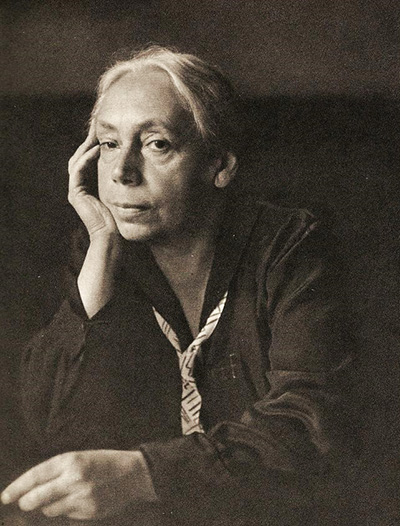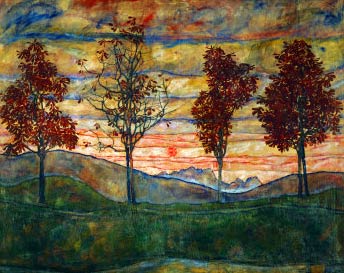Struck from the List
Today, Paul Klee’s art is admired far beyond his native Germany. Klee himself believed that future generations would more fully appreciate his work – famously declaring "I cannot be fully understood here and now" – and he would surely have been delighted that his expressive powers, his humour and observation are now valued for what they are.
Description of the Artwork
Struck from the List (Von der Liste Gestrichen to give it it's original German title) came about in 1933 and represents an abstract depiction of the artist's political issues at this point in his career.
Klee's use of colour in this painting is used to represent mood, whilst the image itself captures his sad, emotional face after losing his job as a result of oppression within Germany at that time. Klee chose to form his face from blocks of colour, all carefully combined to match the downbeat tone of this piece.
The black cross running to the side of his face represents visually his being "struck from the list", where his property was searched, and his job taken away. This oppression would continue into the establishment's treatment of his art, just as it would for a number of others who worked in a similarly modern manner.
Background to the Painting
Sadly, Klee’s progressive and experimental style was deeply controversial in the Germany of the 1930s, and "Struck from the List" ("Von der Liste gestrichen") reflects his feelings at a time when his artistic beliefs could easily have cost him his life.
The 1920s saw Klee being acclaimed by French Surrealists and striking up a creatively rewarding relationship with many of the leading figures in the Bauhaus movement. This school of total design made a huge contribution to the development of modernism. However, the Nazi regime perceived a threat in its progressivism, its international influences and the left-wing opinions of many of its leading figures.
Use of Colour
In 1933, Klee found his work classified as 'entartete Kunst': "degenerate art". His bitterness and anger is laid bare in the self-portrait Struck from the List – and not only in the expression on his face. Klee had once declared "Colour and I are one": colour was not merely his medium, but the key to himself. Here, a palette of browns, ochres and greys expresses a sense of despair, while the black cross, struck across his head, literally declares him a marked man.
Like so many Germans who fell under suspicion because of their political views or ethnic identity, Klee felt that Hitler's rise to power had driven a wedge through his sense of nationality and self.
He had lived through Germany’s troubled 1920s, after serving in a world war which had killed a number of his friends, including the painters Franz Marc and August Macke. Realising that the Nazi regime would never allow him to teach his students or exhibit his work, Klee fled with his family to the safety of Switzerland.
Large Image of Original Painting
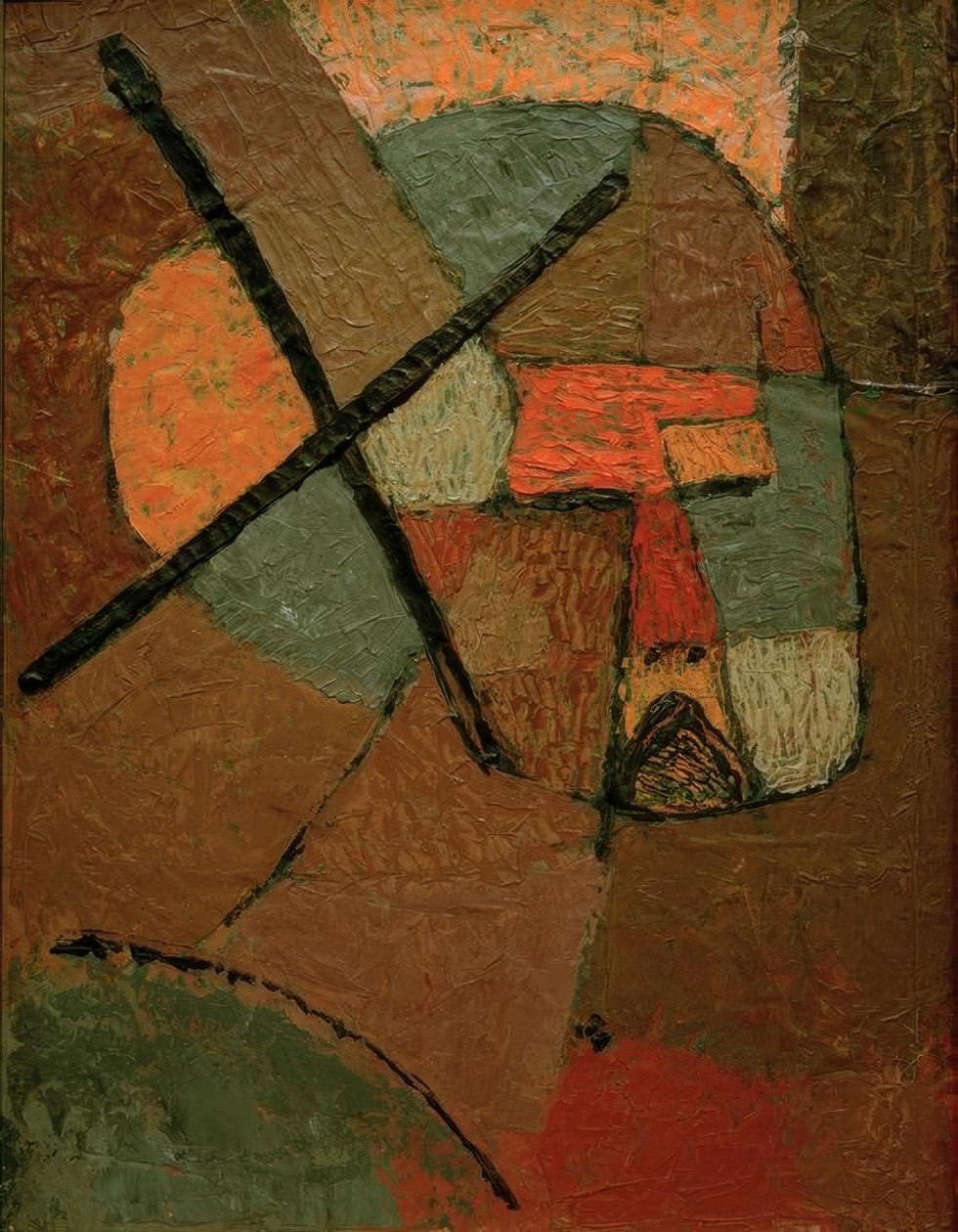 Struck from the List (Von der Liste Gestrichen) by Paul Klee, 1933
Struck from the List (Von der Liste Gestrichen) by Paul Klee, 1933
More PAUL KLEE Paintings
More Expressionist Artists



